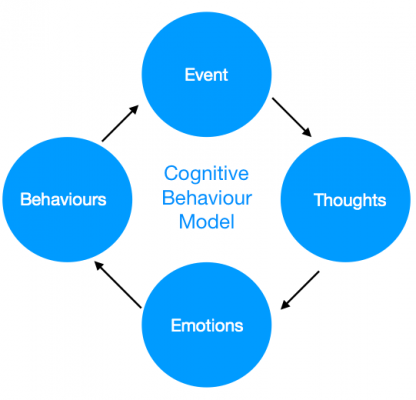CBT Therapy in Benfleet, Essex
Change how you think. Change how you feel.
At Benfleet Counselling, we offer Cognitive Behavioural Therapy (CBT)—a highly effective, evidence-based approach that helps you understand the connection between your thoughts, feelings, and behaviours. If you’re feeling stuck, anxious, overwhelmed, or low, CBT can provide practical tools to help you move forward with clarity and confidence.
CBT is one of the most widely used therapies for anxiety, depression, and many other emotional and behavioural challenges. It’s a structured, short-to-medium-term therapy that focuses on the here and now, helping you break unhelpful thought patterns and create lasting, positive change.
How CBT Works
CBT is based on the idea that our thoughts, emotions, physical sensations, and behaviours are all linked. When negative thinking takes over, it can create a vicious cycle that affects your mental and even physical well-being.
Working with a trained CBT therapist at Benfleet Counselling, you’ll:
-
Identify unhelpful thinking habits
-
Understand how they affect your emotions and behaviours
-
Learn to challenge and reframe thoughts
-
Build healthy coping strategies
-
Improve daily functioning and emotional resilience
CBT Model

What Can CBT Help With?
Cognitive Behavioural Therapy is used to treat a wide range of mental health conditions, including:
Emotional & Psychological Issues:
-
Anxiety and panic attacks
-
Depression and low mood
-
OCD (Obsessive Compulsive Disorder)
-
PTSD and trauma
-
Phobias and fears
-
Health anxiety
-
Sleep difficulties
-
Low self-esteem
-
Stress and burnout
Chronic Health Conditions:
While CBT doesn’t cure physical conditions, it can help you manage the emotional effects of:
-
IBS (Irritable Bowel Syndrome)
-
Chronic Fatigue Syndrome (CFS/ME)
-
Fibromyalgia
At Benfleet Counselling, we tailor CBT sessions to your specific needs, ensuring a personalised and supportive experience.
What to Expect from CBT Sessions
CBT is typically delivered in weekly or fortnightly sessions, either in-person at our peaceful Benfleet therapy space or online. Sessions last around 50 minutes and a course may include between 6 to 20 sessions.
During your CBT sessions, you will:
-
Break down challenges into thoughts, feelings, and behaviours
-
Identify patterns that are holding you back
-
Learn and practise new strategies in your everyday life
-
Track progress with your therapist in a structured, goal-focused way
The aim is not just short-term relief, but lasting change. You’ll leave therapy with tools you can continue to use long after your sessions have ended.
Why Choose CBT at Benfleet Counselling?
-
Local, trusted support from qualified CBT therapists
-
Peaceful, private therapy rooms in a Grade II listed building in Benfleet
-
Flexible appointment times, including evenings and online sessions
-
Safe, confidential, and welcoming environment
We’re here to help you feel more in control and better equipped to face whatever life brings.
Start Your Cognitive Behavioural Therapy Journey in Essex
Taking that first step towards therapy can feel daunting—but at Benfleet Counselling, we make it simple, supportive, and tailored to you. Whether you’re struggling with anxiety, stress, low mood or simply need some help navigating life, we’re here to guide you.
Get in touch today to arrange your first CBT session in Benfleet or online.
📞 Call us on 07927 594 585 or email [email protected]
📩 Or fill out our contact form — we’ll respond within 24 hours.

